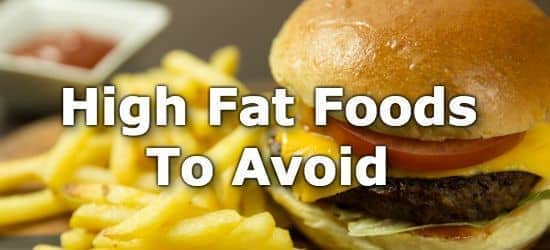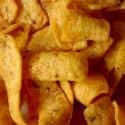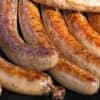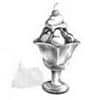FAT AND CALORIES

Low-fat foods are only one component of weight loss. If you aren’t watching how many calories you eat, even fat-free and low-fat foods will be stored in your body as fat, leading to weight gain instead of weight loss.
What's the difference between fat "cholesterol" and calories?
Fat is one of six nutrients your body needs to stay healthy. The other five nutrients are:
- Carbohydrates (found in fruits, vegetables, pasta, rice, grains, peas, beans, and other legumes)
- Proteins (found in meat, poultry, dairy products, eggs, and beans)
- Minerals (such as potassium, calcium, and iron)
- Vitamins (such as vitamins A, D, E, and K)
- Water
Of these six nutrients, carbohydrates, protein and fats provide calories. Each gram of carbohydrate and protein yield 4 calories/gram. Each gram of fat yields 9 calories.
A calorie is a measurement, just like a teaspoon or an inch. Calories are the amount of energy released when your body breaks down (digests and absorbs) food. The more calories a food has, the more energy it can provide to your body. When you eat more calories than you need, your body stores the extra calories as body fat. Even a fat-free food can have a lot of calories. Excess calories in any form can be stored as body fat.
Why does fat get much attention?
Fat gets much of the attention for many good reasons. Consider these facts:
- Saturated and trans fat can raise low-density lipoprotein (LDL) cholesterol (known as the “bad cholesterol”) levels in the blood. High total cholesterol or a high LDL cholesterol level is a leading risk factor for heart disease.
- Some fatty foods (such as bacon, sausage, and potato chips) often have higher calories with fewer vitamins and minerals than low-fat other foods. (Note: Protein sources, especially red meat and dairy products, contain saturated fat. Good, low-fat sources of protein include lean meat, fish, poultry without skin, beans, lentils, tofu, fat-free or low-fat yogurt, milk, and cottage cheese.)
- Fat has more than twice as many calories per gram as carbohydrates and proteins. A gram of fat has about 9 calories, while a gram of carbohydrate or protein has about 4 calories. In other words, you could eat twice as much carbohydrates or proteins as fat for the same amount of calories.
Will I lose weight if I eat low-fat foods?
It's true that a diet high in fat can lead to weight gain. But it takes more than just limiting high-fat foods to lose weight. You must also watch how many total calories you eat. Remember, extra calories even from fat-free and low-fat foods can get stored in the body as body fat. Choosing lower-fat options is a good idea to help reduce total caloric intake, but also pay attention to caloric intake from carbohydrate and protein, too. Also, substituting fat with highly processed carbohydrate-rich foods and sugars is an unhealthy trade-off; some foods labeled as “low-fat,” “reduced–fat,” or “fat-free” have more added sugar.
To lose weight, you need to have a calorie deficit. One way you can achieve this is by eating less fat and fewer calories and exercising. Exercise burns calories. (Consult with your healthcare provider before starting an exercise or diet program.)
How much fat should I eat?
A diet that is moderate in fat content is important for maintaining a healthy weight and preventing heart disease and stroke while providing adequate and essential nutrients. The Institute of Medicine and the American Heart Association recommend a total fat intake of 25-35 percent of calories. That's about 80 grams of fat or less a day if you eat 2,000 calories a day.
How can I know how much fat I am eating?
- Read nutrition labels on food packages. Nutrition labels show the number of grams of fat per serving. Compare this number to your “budgeted” amount of fat for the day. Food labels also show the daily percentage of fat provided in each serving. In other words, if the daily percentage of fat per serving is 18%, each serving provides 18% of the total fat you should eat for the day. Consume higher-fat foods in moderate amounts to keep calories under control if you are trying to lose weight.
- The fat content of foods can be found online and with the use of apps and in fat and calorie-counting books. When choosing information, look for those using the USDA Food Composition Databases.
Top 10 High Fat Foods to Avoid

Of all the fats listed below, trans-fats are easily the most damaging and should be avoided. Read ingredient labels and avoided any trans or partially hydrogenated fats.
High-fat foods to avoid include fast foods, whipped cream, fatty meats, fried foods, fatty snacks, processed meats, desserts, fatty salad dressings, animal fats, and trans-fats. The daily value (DV) for fat is 65 grams per day.
List of Unhealthy High Fat Foods
#1: Fast Foods (Burger King Double Whopper With Cheese)

| Fat per Burger | Fat per 100g | Fat per 200 Calories |
|---|---|---|
| 68g (105% DV) | 17g (26% DV) | 13g (20% DV) |
#2: Processed Meats (Brautwurst Sausage)
| Fat per Cup Whipped | Fat per 100g | Fat per 200 Calories |
|---|---|---|
| 37g (57% DV) | 31g (48% DV) | 21g (33% DV) |
#3: Beef Short Ribs

| Fat per 3oz | Fat per 100g | Fat per 200 Calories |
|---|---|---|
| 36g (55% DV) | 42g (65% DV) | 18g (27% DV) |
#4: Fried Foods (Fried Chicken)

| Fat in 1 Chicken Breast | Fat per 100g | Fat per 200 Calories |
|---|---|---|
| 35g (54% DV) | 17g (25% DV) | 12g (19% DV) |
#5: Fatty Snacks (Corn Chips)

| Fat per Cup | Fat per 100g | Fat per 200 Calories |
|---|---|---|
| 29g (45% DV) | 33g (51% DV) | 12g (18% DV) |
#6: Processed Meats (Brautwurst Sausage)

| Fat per Sausage | Fat per 100g | Fat per 200 Calories |
|---|---|---|
| 25g (38% DV) | 29g (45% DV) | 18g (27% DV) |
